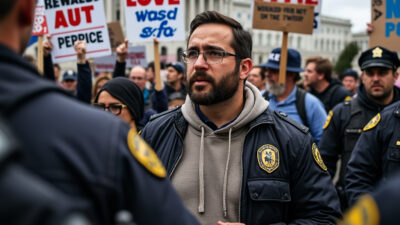Trump and the India-Pakistan Ceasefire A Diplomatic Intervention
The 2025 India-Pakistan conflict marked a significant escalation in the long-standing tensions between the two nuclear-armed neighbors. Amidst the chaos, the intervention of former U.S. President Donald Trump played a pivotal role in brokering a ceasefire. This article delves into the intricacies of the conflict, the diplomatic efforts that led to the ceasefire, and the implications for regional stability.
The Spark That Ignited the Conflict
On 22 April 2025, a brutal attack in Pahalgam, Kashmir, left 26 civilians dead, most of them tourists enjoying the scenic valley. The assault, claimed by a Pakistan-based militant group, triggered outrage across India. New Delhi accused Islamabad of supporting cross-border terrorism, citing intelligence linking the attackers to Pakistani training camps. Pakistan vehemently denied involvement, calling the accusations baseless and blaming internal unrest in Kashmir. The incident escalated tensions, pushing both nations toward a military confrontation, setting the stage for India’s retaliatory Operation Sindoor.
Operation Sindoor India’s Retaliation
India launched Operation Sindoor on 28 April 2025, a precision military strike targeting alleged terrorist training camps in Pakistan-administered Kashmir. Using Rudram-II anti-radiation missiles and Tejas Mk-1A fighters, the Indian Air Force claimed to have neutralized over 50 militants. New Delhi justified the operation as a preemptive measure against further attacks, citing intelligence on planned strikes. The U.S. and EU urged restraint, while China condemned the violation of sovereignty. Pakistan dismissed the casualties as fabricated, setting the stage for retaliation.
Pakistan’s Counterstrike Operation Bunyan-un-Marsoos
Pakistan’s counterstrike, Operation Bunyan-un-Marsoos, targeted Indian military installations in Kashmir using precision-guided munitions and drones. Islamabad claimed it struck terrorist launchpads, while New Delhi accused Pakistan of hitting civilian infrastructure. The operation escalated into history’s first drone battle, with both sides deploying swarms of armed UAVs to intercept and neutralize each other’s assets. Pakistan’s military emphasized surgical strikes to avoid civilian casualties, but India disputed this, alleging collateral damage. The drone warfare marked a dangerous technological shift in the conflict, raising global concerns over uncontrolled escalation.
The Humanitarian Cost
The conflict’s humanitarian toll was devastating, with over 3,200 civilian casualties reported across Kashmir and Punjab. Religious sites, including the historic Sharda Peeth temple and Lahore’s Badshahi Mosque, suffered heavy damage, igniting outrage. Survivors described indiscriminate shelling reducing entire neighborhoods to rubble. A UN report documented 500,000 displaced, many trapped in crossfire without aid. Testimonies from a Red Cross field hospital highlighted children accounting for 40% of trauma cases. The destruction of water and power grids exacerbated starvation and disease outbreaks, compounding the crisis.
International Reactions and Calls for Peace
The international community reacted swiftly to the India-Pakistan conflict, with the UN Security Council urging an immediate ceasefire amid fears of nuclear escalation. The U.S., EU, and China issued joint statements emphasizing de-escalation, while Russia called for bilateral dialogue. Regional players like Saudi Arabia and Iran offered mediation, reflecting broader geopolitical stakes. Experts warned that prolonged hostilities risked triggering a nuclear exchange, given both nations’ arsenals. Global markets fluctuated as tensions spiked, underscoring the conflict’s far-reaching implications. The humanitarian crisis, detailed earlier, amplified calls for urgent diplomatic intervention.
Trump’s Diplomatic Outreach
Former U.S. President Donald Trump leveraged his unconventional diplomatic style to engage both India and Pakistan amid escalating tensions in early 2025. Behind closed doors, Trump reportedly made direct calls to Prime Minister Narendra Modi and Pakistan’s leadership, urging restraint while emphasizing the risks of further escalation. Publicly, he tweeted, “Big progress being made—hope to see India and Pakistan come to the table soon.” His administration’s backchannel efforts, including intelligence-sharing and pressure on allies, played a pivotal role in creating space for dialogue ahead of the eventual ceasefire.
The Ceasefire Agreement
The ceasefire agreement brokered on 10 May 2025 mandated an immediate cessation of hostilities along the Line of Control (LoC) and the International Border. Key terms included troop pullbacks to pre-conflict positions and the reactivation of the DGMO hotline for real-time de-escalation. Both sides agreed to allow UN observers to monitor compliance, a concession pushed by Trump’s team. Scheduled talks on 12 May aimed to address Kashmir-related grievances and establish a framework for lasting peace, though skepticism lingered given past failures. The agreement leaned heavily on backchannel assurances facilitated by U.S. mediators.
Challenges to the Ceasefire
Despite the ceasefire agreement, accusations of violations emerged swiftly, with both India and Pakistan blaming each other for sporadic firing along the Line of Control (LoC). New Delhi reported three incidents within 48 hours, while Islamabad claimed Indian forces targeted civilian areas. The hotline between DGMOs, established under the agreement, was activated but failed to prevent escalatory rhetoric. A near-breakdown occurred on 14 May when Pakistan alleged an Indian drone strike in Kashmir, prompting retaliatory shelling. Trust remained fragile, with neither side fully committing to de-escalation, risking renewed conflict.
The Aftermath and Regional Implications
The 2025 India-Pakistan ceasefire, brokered with U.S. diplomatic intervention, left lasting scars on regional dynamics. While violence subsided, mutual distrust deepened, particularly over Kashmir, where India’s hardening stance clashed with Pakistan’s demands for international mediation. The U.S. role, though pivotal, faced skepticism from both sides—India wary of external interference, Pakistan disappointed by perceived U.S. bias. Regional security shifted as China bolstered ties with Pakistan, countering U.S.-India alignment. The ceasefire’s fragility underscored the need for sustained multilateral engagement, with external actors like the U.S. balancing neutrality and strategic interests to prevent renewed escalation.
Lessons Learned and the Path Forward
The 2025 India-Pakistan ceasefire underscored the critical role of preventive diplomacy in de-escalating tensions. Key lessons include the need for third-party mediation to bridge trust deficits, as demonstrated by Trump’s intervention. To prevent future conflicts, both nations must prioritize backchannel talks and confidence-building measures, such as trade normalization and cultural exchanges. Regional forums like SAARC should be revitalized to foster dialogue. External actors, particularly the U.S., must balance engagement without appearing biased, ensuring their involvement strengthens—not undermines—local ownership of peace processes.

Conclusions
The 2025 India-Pakistan conflict underscored the fragility of peace in South Asia and the critical role of international diplomacy in averting disaster. The ceasefire brokered with Trump’s intervention offers a glimmer of hope, but lasting peace will require sustained efforts and trust-building measures between the two nations.



